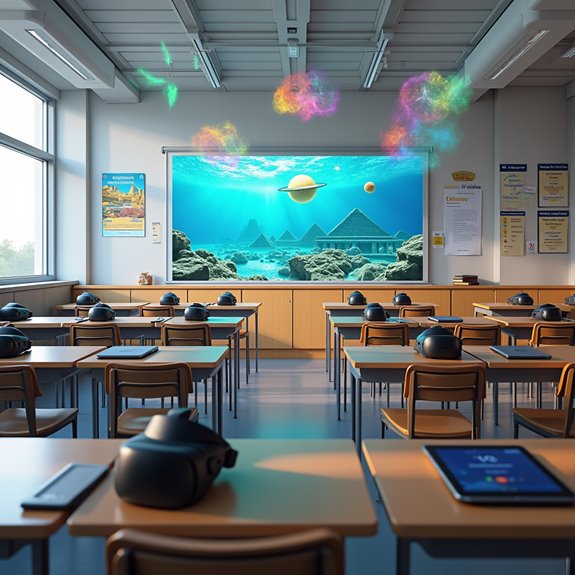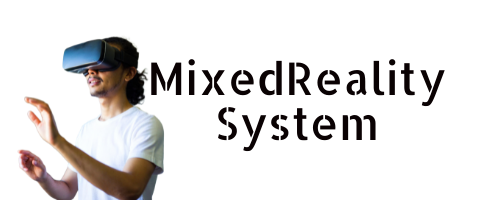Virtual field trips powered by VR technology are revolutionizing education by breaking down barriers of distance, cost, and accessibility. Students can now explore museums, historical sites, and far-off destinations from their classrooms, making learning more engaging and inclusive. These immersive experiences boost classroom discussions, develop real-world skills, and level the playing field for students with mobility challenges or in remote areas. The educational adventures made possible through virtual reality are just beginning to unfold.

While traditional field trips often involve permission slips, packed lunches, and long bus rides, virtual reality is revolutionizing how students explore the world beyond their classroom walls. Gone are the days when distance, cost, or logistics could prevent students from experiencing amazing destinations. Now, with just a few clicks, entire classrooms can zoom through the solar system, walk through ancient Roman ruins, or dive deep into coral reefs.
These virtual adventures aren't just cool tech gimmicks – they're powerful learning tools that pack a serious educational punch. Students who might have dozed off during a regular history lesson suddenly become wide-eyed explorers when they're virtually standing in the middle of the Revolutionary War. And here's the best part: these digital field trips are incredibly cost-effective, meaning schools can offer more enriching experiences without breaking the bank. Real-time assessment features allow teachers to track student understanding through interactive quizzes and polls during the virtual experience.
What makes virtual field trips truly special is their ability to level the playing field for all students. Kids with mobility challenges or health restrictions can explore alongside their classmates, and schools in remote areas can visit world-class museums or far-off lands just as easily as schools in big cities. Virtual experiences particularly benefit students with special needs, showing improved learning outcomes. Similar to modern museums, these virtual field trips promote inclusive learning by removing physical and geographical barriers.
Teachers are finding that these virtual experiences spark more classroom discussions and boost engagement levels through the roof. The technology behind these virtual adventures keeps getting better and more accessible. While VR headsets can create mind-blowing immersive experiences, they're not always necessary. Many schools are successfully using interactive platforms with 360-degree panoramas that work just fine on regular computers or tablets.
Students can collaborate, share discoveries, and even guide each other through virtual environments, turning what could be a solitary experience into a social learning adventure. These virtual journeys are doing more than just replacing traditional field trips – they're opening up entirely new possibilities for learning.
Students can now practice real-world skills, explore potential career paths, and make connections between their textbook learning and actual applications. It's like having a magic school bus that can travel anywhere, anytime, without ever leaving the classroom.
Frequently Asked Questions
How Long Does It Take Teachers to Create a Custom VR Field Trip?
Creating a custom field trip typically takes teachers 10-20 hours, depending on content complexity, technical proficiency, resource availability, and whether they're working independently or collaboratively with others.
What Are the Cybersecurity Risks of Using VR in Educational Settings?
Educational VR systems face risks of data breaches, malware infections, student privacy violations, social engineering attacks, and unauthorized access to personal information. Weak security protocols can expose sensitive student biometric data.
Can Students With Motion Sickness or Visual Impairments Use VR Field Trips?
Students with motion sickness can adapt through mitigation techniques, while those with visual impairments may use accessibility features. However, individual experiences vary and appropriate accommodations should be considered.
How Many Students Can Participate in a VR Field Trip Simultaneously?
The number of simultaneous participants depends on available VR headsets, classroom space, and software limitations. Large groups can use immersive classrooms with projected content or rotate through individual headset sessions.
What Backup Plans Should Schools Have if VR Equipment Malfunctions?
Schools should maintain backup traditional lesson plans, keep spare VR equipment, establish technical support contacts, document troubleshooting procedures, and have alternative digital learning activities readily available.



Leave a Reply